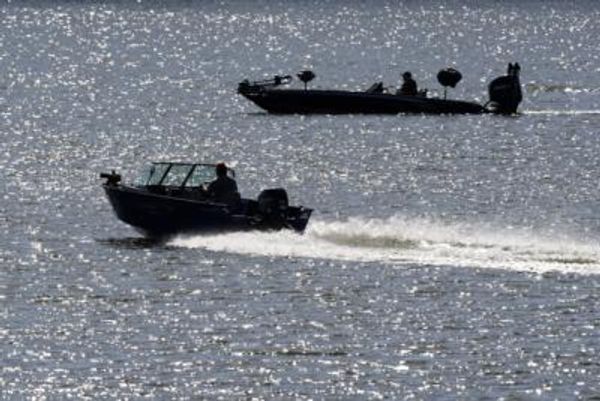As dawn broke last Saturday over the 40-mile Gaza-Israel barrier, once confidently described as an “iron wall”, Hamas struck at the eyes and ears of Israel’s defence. It was shortly before 6.30am at the end of a Sukkot week of holiday when explosive devices, dropped from above by drones, made a mockery of past claims of impregnability by disabling the wall’s communication towers and its remote-controlled machine gun posts, while snipers picked off sensors and cameras, blinding Israeli defenders, left staring at blank screens, to what was in deadly motion.
Unseen in the weak light of early morning and unheard under the roar of the first of about 2,200 rockets fired towards southern and central Israel, Hamas fighters used wire cutters to make discreet punctures in the 20ft-tall (6 metres) double fence barrier or detonated small explosive loads to create larger openings.

It allowed their best trained men to scramble across on motorbikes and pickup trucks, their wheels churning up dust, as they embarked on a murderous search for the closest Israeli soldiers.
The shock troops from the military wing of Hamas, known as the Qassam brigades, bristling with machine guns and rocket-propelled grenades, were followed by bulldozers and hundreds more armed men, many on foot, swarming through 30 breaches of the defensive line.
Some of the Hamas militants, showing a taste for the spectacular, flew over on motorised paragliders – terror on wings. A total of 1,500 gunmen are believed to have crossed, under a sky lit by rocket fire.
“We have decided to put an end to all of the occupation’s crimes,” announced Hamas’s military commander, Mohammed Deif. “The time is over for them to act without accountability. Thus, we announce the al-Aqsa deluge.”
Over the last week, hours of footage has been shared on social media, taken from security cameras, car dashcams and the phones of terrorists and victims alike, providing an uncomfortably clear picture of how Israel’s darkest day unfolded.
What has become evident is that those charged with protecting Israel were hopelessly unprepared.
As of Friday, 1,300 residents of Israel have been killed, including 247 soldiers, while the Israeli government claims to have killed about 1,500 Hamas fighters on its territory and more than 1,500 people have died in the Gaza Strip.
* * *
Intelligence failure
A surge of communications activity on militant networks in Gaza had been picked up earlier that Saturday by Israeli intelligence. In combination with a general warning from the Egyptian security services of an impending event, the information could have saved lives.
Two telephone consultations had been held overnight between Israel’s southern security services, the Israel Defence Forces Intelligence Corps, the operations division and southern command with the knowledge of the IDF chief of staff, Herzi Halevi, according to the Israeli newspaper Haaretz. It was decided that they were just picking up chatter around a paramilitary exercise and that the alert level need not raise.
Three observation balloons used to monitor the Gaza border had broken down in the past few weeks and they had not been replaced. Israel had relaxed its guard.
It was a catastrophic miscalculation. Plans and maps found on the bodies of Hamas fighters show that they knew the numbers of soldiers they might meet, how long it would take for local reinforcements to arrive, and from where.
Their orders were to kill and to take hostages “for negotiations”.

* * *
Military bases
The closest machine gun posts were cleared with grenades within minutes of the wall being breached. At sea, a motorboat carrying Hamas commandos headed at pace to Zikim, an Israeli coastal town just north of the Gaza Strip that hosts the Bahad 4 base, where new IDF recruits were undergoing their basic training.
The Israeli navy managed to cut off at least one of the boats but already by 7am the Zikim base had been overrun by land.
The manning of such bases had been cut down over the years based on a misplaced confidence that the iron wall had their backs.

“I deeply care for all of you,” wrote Cpl Naama Boni, a 19-year-old soldier serving in the 77th Battalion of the Armoured Corps, to friends and family. “I have a head injury, and a terrorist nearby might start shooting at me. I am currently with an injured soldier from the Golani Brigade, and there are no reinforcements available.”
It was 7.30am. Boni would not survive. Zikim was one of 11 military bases to come under attack that morning, four of which were overrun.
Video footage taken by Hamas fighters showed how young men and women were slain as they tried to hide in toilet cubicles, bedrooms and cupboards.
* * *
Supernova festival
As Boni in Zikim was typing out her last messages, a Hamas paraglider was cruising above the heads of 4,000 people dancing, drinking and laughing at the Supernova festival, south from her and 3.7 miles east of Gaza, close to the Re’im kibbutz.
Small plumes of black smoke had appeared in the sky from defensive missiles used by the Israeli military to intercept rockets fired from Gaza. At first, few of the partygoers – who had been promised a “journey of unity and love” by organisers – were concerned by the smoke or by the man buzzing above them, perhaps reckoning it was all part of the event.
Then the sirens went off. The music stopped. Almost immediately the crack of gunfire was heard. Terror followed.
The local armed security was overwhelmed by fire from all directions. Stalking among the partygoers, Hamas gunmen ran amok, firing with abandon at “anything with a pulse”, one witness said. Some tried to get to their cars to escape but those who made it on to the main road faced armed men farther down the line, guns raised, murder on their minds.
Others attempted to flee in vehicles or by foot across the fields on the other side of the main access road, aiming to reach the woods on the horizon. Sniper fire whistled around them. Some of the Hamas militants took chase, pursuing for miles from the festival site, through orchards and dusty fields, looking for a kill.
Those easy to snatch, such as Noa Argamani, 25, and her boyfriend, Avinatan Or, were hustled away at gunpoint. “Don’t kill me! No, no, no,” Argamani pleaded as she was driven away on the back of a bike. Her boyfriend was marched down a dirt path, destination unknown.
Video footage timed at 9.23am captured just one horrific moment among many during the carnage: a Hamas gunman firing close to one young man before leading him away. A second Israeli, lying by a car, possibly injured and certainly playing dead, lifted his head momentarily. It was the last thing he would do.
A second Hamas fighter casually shot a round into his prostrate body. Others later took his belongings.
An estimated 260 partygoers were murdered. Tens more could be among the 150 Israeli hostages believed to have been taken back to Gaza during the day. A video emerged of Shani Louk, 23, lifeless in the back of a truck, spat upon by Hamas fighters, legs unnaturally bent and her hair matted with blood.

* * *
The kibbutzim
It took minutes for Hamas to reach the closest Israeli settlements to the Gaza Strip, communal gatherings known as kibbutzim.
The timings of the horror can be recounted precisely thanks to video released by a Telegram channel called South First Responders. A camera caught the arrival of two armed men at the Be’eri kibbutz at 6.55am. They attempted to lift the security gate but then hid themselves as a blue Mazda pulled up.
The gate lifted, at which point those inside the car were shot dead. Later footage at 10.06am shows Hamas militants pulling two dead men from the car and looting their bodies. They were two of 118 to die in Be’eri. A mobile phone is taken. One corpse is later thrown into the back of a white SUV and driven away.

Where video footage is missing, gripping testimony fills the gap. In Nirim, another kibbutz, with a population of 400 people, Eldad Hess, a 38-year-old civil engineer, was woken at 6.30am by rockets. He and his wife, Goldi, took their two-year-old son, Uri, to the reinforced concrete shelter where their older children, Avigail, seven, and four-year-old Yotam, were sleeping, and swung the steel door shut.
At first, Hess thought it was just another rocket attack – a “wake-up alarm” from Gaza to mark Sukkot. But the alarm on their phones would not stop vibrating. Then the family heard explosions. “Ten minutes later we heard automatic rifle shots outside the house,” he said. “I understood what was happening but in my heart I couldn’t believe what was happening.”
A barrage of WhatsApp messages arrived from neighbours, confirming that shots – and shouting in Arabic – had been heard all over the kibbutz. Hess realised he needed to lock the door.
The problem was that the door could still be opened from the outside – a precaution the family had taken to stop the children locking themselves in the shelter.
“All I had to keep the door closed was my muscles and my will to live,” Hess said. A few minutes later, the family heard voices and shots inside the house. Multiple attempts were made by the Hamas fighters to get in. They failed – but killed the family’s nextdoor neighbours instead, including a 17-year-old girl.
In Nir Oz kibbutz, a number of people, including Doron Asher Katz, 34, and her young daughters, and 85-year-old Yafa Adar, were taken hostage and paraded and videoed by their captors
In Kfar Aza, the largest kibbutz in the northern area of the Gaza border, where 750 Israelis lived just 800 metres from the iron wall, reports emerged of babies being killed in their cots.
On Friday, the Israeli government published images including one of the corpse of a baby. Its clothes were spattered in blood.

* * *
Vengeance
With cellular communications at the wall down, the scale of the assault had not been immediately clear in Tel Aviv, but at 6.29am the prime minister, Benjamin Netanyahu, was updated on some worrying movements, and by 8.23am the state of Israel was on a war footing, with reservists called to arms.
In Gaza there too was a dawning realisation. The operation had been kept to a tight circle. Few knew to what it amounted but the potential repercussions swiftly became obvious to the average man and woman on the street.
“We were ecstatic. It’s like a dream that is hard to wake up from,” said Maha, 34, from Gaza City, in a call with Haaretz about the first reports of the incursion into Israel by Palestinian fighters. “But as the picture became clearer and I saw that there were Israeli prisoners, I realised that we were in a nightmare, in hell,” she said.
The first Israeli strikes on Gaza were at 10.34am. It would be the first of thousands on a thin stretch of land containing 2.2 million people. “Citizens of Israel, we are at war. Not an operation, not a round – at war,” Netanyahu announced in a first statement to the nation at 11.35am. “The enemy will pay an unprecedented price.”
Within two hours, 21 buildings said to house Hamas’s military operations had been flattened. Troops were sent to the south of Israel to rescue those in the settlements who had survived the Hamas onslaught.
It would take days more to secure them. “There were burnt cars and broken windows,” Hess said of his family’s escape from their shelter in Nir Oz under Israeli protection late on Saturday. “What we saw was a war zone. There’s no other word for it. And then we had to run for our lives.”
The US president, Joe Biden, gave Netanyahu full backing for his military response in a call at 6.08pm and publicly offered “all appropriate means of support”. The rhetoric from the Israeli government hardened by the hour.
Netanyahu made a second statement to the nation at 10.16pm. Gaza was “the city of evil”, he said. “We will turn all the places where Hamas is organised and hiding into cities of ruins. I say to the residents of Gaza: get out of there now. We will act everywhere and with all our strength.”
At 2.19am on Sunday, the prime minister told his nation that all of the sites used to launch the day’s attacks had been wiped from the earth. But Israel had just begun. The “offensive formation” phase was under way.








